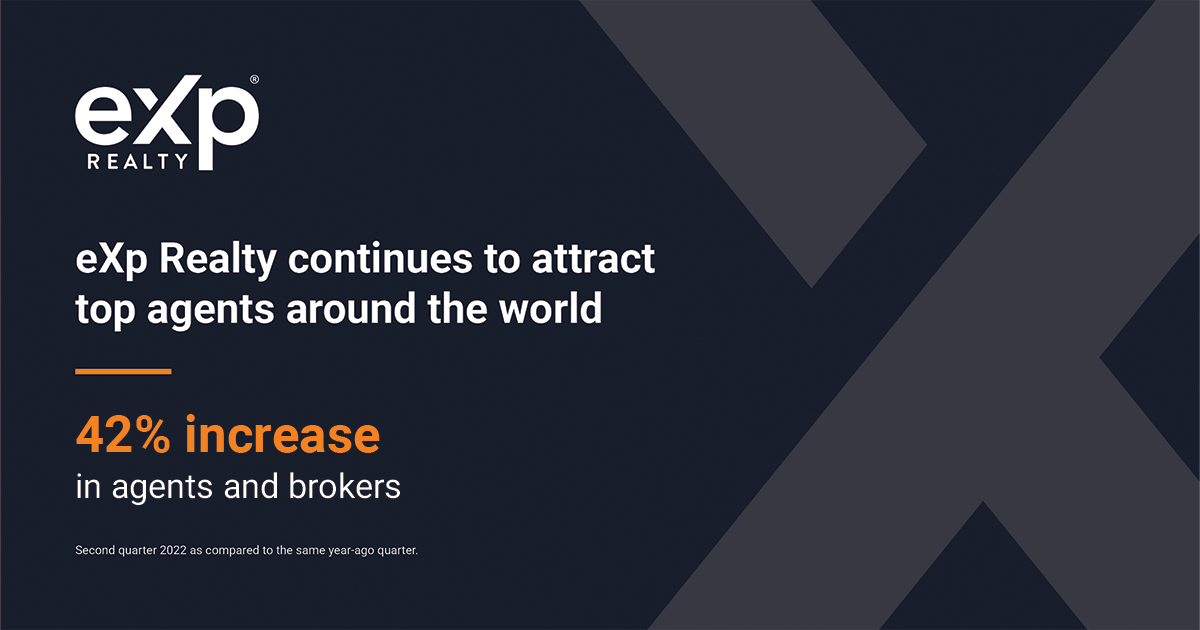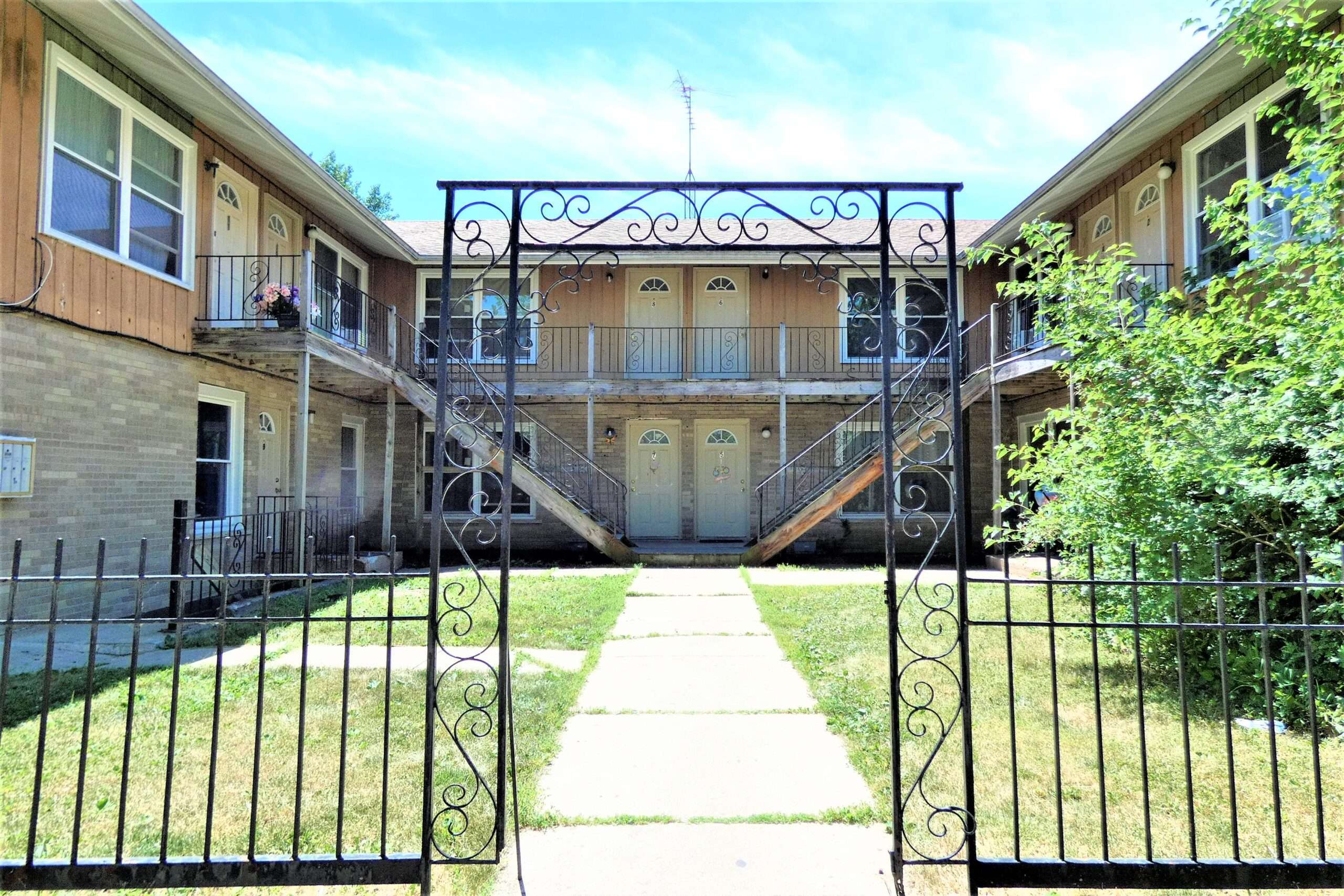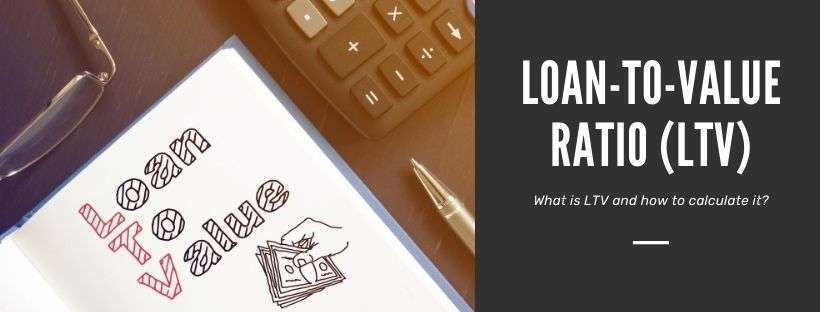
eXp Commercial is one of the fastest-growing national commercial real estate brokerage firms. The Chicago Multifamily Brokerage Division focuses on listing and selling multifamily properties throughout the Chicago Area and Suburbs.
Thursday, August 4, 2022
Call For Offers Kankakee

NAA Supports FY2023 Appropriations that Expand Multifamily

Housing Affordability
- Renewal of tenant-based vouchers ($26.1B);
- Incremental vouchers to expand housing opportunities ($1.1B), adding more than 140,000 new incremental vouchers to expand affordable housing opportunities for low-income people in America including those experiencing or at risk of homelessness and approximately 5,600 new units for seniors and persons with disabilities.
Additional Appropriations
- Community Development Block Grant Program ($3.3B);
- Lead hazard reduction and healthy homes ($65M). For competitive grants to reduce residential health hazards, including lead-based paint, carbon monoxide, mold, radon, and fire safety, of which not less than $25M for lead-based paint hazards;
- Climate resiliency and utility efficiency ($75M). To further the Department’s goal of energy-efficient housing construction and climate resiliency;
- Eviction Prevention ($20M). Providing competitive grants to nonprofit or governmental entities to provide legal assistance, including assistance related to pretrial activities, trial activities, post-trial activities, and alternative dispute resolution, at no cost to eligible low-income tenants at risk of or subject to eviction;
- Department of Homeland Security: National Flood Insurance Program (NFIP): $222.5M for FY23.
What’s Next
The Senate has yet to introduce its spending bills for FY23. It is unlikely that all of Congress will pass its spending bills by the end of this fiscal year (Sept. 30, 2022); however, it is highly unlikely in an election year that there will be a government shutdown. We expect that Congress will pass a continuing resolution that will fund the government at current spending levels until sometime before the end of the year when the 117th Congress will adjourn or into 2023. NAA will continue to monitor and support spending priorities that will benefit housing providers.Wednesday, August 3, 2022
eXp World Holdings Reports Record Second Quarter 2022 Revenue of $1.4 Billion

eXp World Holdings Reports Record Second Quarter 2022 Revenue of $1.4 Billion
Q2 2022 Revenue Increased 42% Year over Year to $1.4 Billion With Agent Growth of 42% Company Declares Cash Dividend for Q3 2022 of $0.045 per Share of Common Stock Repurchases $50 Million of Common Stock During the Second Quarter BELLINGHAM, Wash. — Aug. 3, 2022 — eXp World Holdings, Inc. (Nasdaq: EXPI), (or the “Company”), the holding company for eXp Realty®, Virbela and SUCCESS® Enterprises, today announced financial results for the second quarter ended June 30, 2022.
- Revenue increased 42% to $1.4 billion.
- Gross profit increased 34% to $107.3 million.
- Net income of $9.4 million, compared to net income of $37.0 million in the year-ago quarter. Year over year tax expense increased $22.3 million due to one-time VA allowance release in 2021 and reduction in excess stock-based compensation tax benefit. Earnings per diluted share of $0.06, compared to earnings per diluted share of $0.24 in the year-ago quarter.
- Adjusted EBITDA (a non-GAAP financial measure) of $26.9 million.
- As of June 30, 2022, cash and cash equivalents totaled $134.9 million, compared to $107.4 million as of June 30, 2021. The Company repurchased approximately $50 million of common stock during the second quarter of 2022.
- The Company paid a cash dividend for the second quarter of 2022 of $0.04 per share of common stock on May 31, 2022. On July 29, 2022, the Company’s Board of Directors declared a cash dividend of $0.045 per share of common stock for the third quarter of 2022, a 13% increase, expected to be paid on Aug. 29, 2022, to shareholders of record on Aug. 12, 2022.
- eXp World Holdings and eXp Realty strengthened the leadership team with Shoeb Ansari, Chief Information Officer; Leo Pareja, President of Affiliated Services
- Patrick O’Neill appointed Chief Operating Officer, eXp Realty beginning Aug. 4, 2022. Patrick brings more than 25 years of experience and a proven track record of building and optimizing high-growth technology businesses. More details to come.
- Agents and brokers on the eXp Realty platform increased 42% to 82,856 as of June 30, 2022.
- Real estate transactions closed increased 30% to 150,032.
- Real estate transaction volume increased 44% to $57.9 billion.
- eXp Realty expanded into New Zealand in the second quarter of 2022.
- eXp Realty ended the second quarter of 2022 with a global Net Promoter Score of 68, a measure of agent satisfaction as part of the Company’s intense focus on improving the agent experience.
- Glenn Sanford, Founder, Chairman, and CEO, eXp World Holdings
- Jeff Whiteside, CFO, and Chief Collaboration Officer, eXp World Holdings
- Shoeb Ansari, Chief Information Officer, eXp World Holdings
- Leo Pareja, President of Affiliated Services, eXp Realty
- Adjusted EBITDA excludes stock-based compensation expense and stock option expense, which have been, and will continue to be for the foreseeable future, significant recurring expenses in the business and an important part of the compensation strategy; and
- Adjusted EBITDA excludes certain recurring, non-cash charges such as depreciation of fixed assets, amortization of acquired intangible assets, and impairment charges related to these long-lived assets, and, although these are non-cash charges, the assets being depreciated and amortized may have to be replaced in the future.
Source: eXp World Holdings Reports Record Second Quarter 2022 Revenue of $1.4 Billion https://www.creconsult.net/market-trends/exp-world-holdings-reports-record-second-quarter-2022-revenue-of-1-4-billion/
Tuesday, August 2, 2022
New Listing! Fully Occupied 23-Unit Multifamily Portfolio Kankakee IL
Listing Broker: Randolph Taylor
630.474.6441 | rtaylor@creconsult.net
Price: $995,000
Cap Rate: 7.35%
SHOWINGS: Wednesday Aug 3rd 11 AM - 12 PM
https://properties.expcommercial.com/1030907-sale

What is Debt Yield and How Does it Apply in Commercial Real Estate

Debt yield hasn’t traditionally been a primary commercial real estate loan underwriting metric, but more lenders are incorporating it into their criteria. In the current real estate market, measuring debt yield ratios provides lenders with a stable assessment regardless of unusual or changing conditions.
What is Debt Yield?
Debt yield is a standardized way to measure net operating income (NOI) against total loan value. The ratio is simple to calculate, but it’s an accurate measure of risk that can be used to evaluate individual loans or compare different loans.How to Calculate Debt Yield
The math required for a debt yield calculation is simple and easy. The debt yield formula is: Debt Yield = Net Operating Income / Loan Amount For example, consider the purchase of a property with $300,000 NOI and a loan of $3 million. In this example, the debt yield is 10 percent ($300,000 / $3,000,000 = 10%).What Does Debt Yield Tell You?
Lenders use debt yield ratios to determine what their return would be if a buyer immediately defaulted on a commercial real estate loan. Loans with low debt yields are considered riskier, as the lender would receive a smaller return in the event of foreclosure. Higher debt yields are less risky because the lender would receive a larger return and could recoup their losses faster.
Once lenders know what annual return they’d receive, they can calculate how long it’d take to recoup the loss on a foreclosed property. This is done by dividing 100 percent by the debt yield ratio (annual return). The result is the number of years that it’d take to recoup all losses. Recoup Time = 100 / Debt Yield Assuming the above debt yield of 12 percent, the lender could recoup their investment in around 8.3 years (100% / 12% = 8.33 years). Borrowers can alternatively use the ratio to calculate the maximum loan amount a property can qualify for. If the allowed debt yield and net operating income are known, then the loan amount is the NOI divided by the debt yield. Maximum Loan Amount = Net Operating Income / Debt YieldIf a lender requires a minimum debt yield of 10 percent, the maximum amount that the above example could qualify for would be $1.2 million ($120,000 / 0.10 = $1,200.000).
(Of course, any maximum loan amount would also be subject to loan to value (LTV) and debt service coverage ratio (DSCR) requirements. If a lender considers all three of these ratios, whichever has the lowest permitted loan amount is the one that sets the maximum amount borrowed.)How Debt Yield Applies to Commercial Real Estate
Lenders appreciate that debt yield ratio is insulated from variables that can skew loan to values, debt service coverages, and even cap rates. As extremely low-interest rates and spiking property values make accurate loan risk assessment more difficult, debt yield provides a consistent risk measurement when underwriting commercial real estate loans.Debt Yield vs. Loan to Value
Loan-to-value ratios depend heavily on the value of a commercial property, and this ratio is susceptible to large swings in property values. Borrowers can potentially get much larger loans when property values increase drastically, and lenders can be underwriting an underwater loan if property values then drop drastically.
In contrast, debt yield ratios aren’t impacted by changes in property value. The loan itself is the underlying denominator, and not how much the property is worth. So long as net operating income doesn’t change, debt yield won’t change after a loan is underwritten.Debt Yield vs. Debt Service Coverage
Debt service coverage is based on the annual debt payment, which is affected by interest rate and amortization schedule. Thus, DSCR can be skewed by extreme interest rates (currently extremely low) and/or long amortizations. The DSCR for variable-rate loans will also change as interest rates increase.Debt yield is based on the loan amount, and thus won’t change with interest rates or amortization schedules. It is thus a more consistent measure in many situations, even though both measurements use net operating income.
Debt Yield vs. Cap Rate
Although cap rate also looks at net operating income, this is based on the value of a property. Cap rate is thus susceptible to some of the same issues as loan to value is, and which debt yield is insulated against.What is an Acceptable Debt Yield?
The Comptroller’s Commercial Real Estate Lending booklet recommends a minimum debt yield of 10 percent, and most lenders that consider this metric follow that recommendation.
In certain situations, lenders may allow a 9 percent debt yield for desirable properties in major markets (e.g. New York City, Los Angeles). Ratios of 8 percent for truly exceptional properties are quite rare, although not altogether unheard of.
Notably, debt yield is based on current net operating income. Projected rent increases or NOI growth isn’t considered when calculating the ratio, so adjusting projections generally won’t have an impact on whether debt yield meets a lender’s minimum requirement.
Monday, August 1, 2022
Loan To Value (LTV) Ratio Overview & Formula

Loan to value ratio is a standard metric that lenders use to assess default risk and qualify commercial real estate loans. While it’s far from the only data point lenders consider, it’s one of the most basic and often checked early on during the loan application process.
What is a Loan to Value Ratio?
Loan to value (LTV) ratio is a straightforward way to measure a commercial real estate loan’s size against the value of the financed property. The ratio is simple, yet considered one of the accurate ways to assess the risk that individual loans present.
Loan to Value Ratio = Loan Balance / Property Value For example: a $400,000 loan on a $500,000 commercial property would have an LTV of 80% ($400,000 / $500,000 = 0.80).What Does LTV Tell You?
Lenders use loan to value ratios as a measure of the risk that different loans present. Higher LTVs are considered riskier than lower LTVs for a couple of reasons.First, borrowers have less equity in their commercial property when the associated loan has a high LTV. Should a property become unprofitable, borrowers who have less equity may be more apt to walk away and default on their loan.
Second, properties are more likely to become underwater when their associated loan has a high LTV. Should the local real estate market crash, properties with high LTV ratios will more quickly become underwater. This not only increases the risk of default, but also may force lenders to take a loss if they foreclose and auction off a property.
In order to ensure that loans fall within their risk parameters, lenders have maximum LTVs that they’ll allow. If borrowers know a loan program’s maximum allowed ratio, the LTV formula can be inverted to determine the maximum property value allowed or down-payment required.What is a Combined Loan to Value Ratio?
When borrowers secure financing through multiple loan programs, lenders often consider the combined loan to value ratio (CLTV) in addition to the loan to value ratio. CLTV measures all of the outstanding balances on a commercial property’s loans against the property’s value. Whereas LTV considers only one loan against the property, CLTV considers all loans that are secured with the property. Combined Loan to Value Ratio = Σ All Loan Balances / Property ValueThe combined ratio provides a more comprehensive measure when multiple loans and/or lines of credit are being used. It’s unnecessary when using only one loan.
How LTV Applies to Commercial Real Estate
Lenders appreciate how loan to value measures what portion of an investment property is financed. No other calculation considers loan balance and property value in such direct relation to each other.Loan to Value vs. Debt Yield
Debt yield measures net operating income against loan balance, and thus shows the annual return on the amount borrowed. The metric doesn’t directly capture any property value change that results from building improvements or general market trends. Because loan to value includes a property’s value within its calculation, LTV will capture any changes in property value that result from improvements or market trends.Loan to Value vs. Debt Service Coverage
Debt service coverage ratio (DSCR) focuses on interest rates and amortization schedules. This metric is almost entirely insulated from changes in property value.
Loan to value doesn’t assess the financials of a loan itself in the same way that DSCR does, but instead examines the loan’s amount as it relates to the property.Loan to Value vs. Cap Rate
Cap rate measures a property’s net operating income against the property’s value. While this is needed to assess how profitable a property is, it doesn’t say anything about the property’s financing.
Loan to value uses the same property value data point, but examines the property’s financing rather than its income.What is an Acceptable Loan to Value Ratio?
Most commercial real estate loan programs allow a maximum loan to value ratio of 75-80%, but some programs differ from this range. Special federal loan programs (e.g. HUD/FHA 223(f)) allow ratios of 83.3-90%. Some private loans will only permit 65-70%.
Additionally, a few specialized programs (e.g. Freddie Mac Green Advantage) may amend the maximum LTV slightly. Any such amendments are usually specifically so that investors can install environmentally friendly or similar improvements.
While qualified investors can take advantage of a program’s maximum allowed LTV, sometimes it’s advantageous to reduce the LTV in order to get a lower interest rate. Certain programs minorly reduce the interest rate when a borrower has more equity in their property. Even if such reductions are minor, the cumulative savings can be substantial considering the time and duration of commercial real estate loans.How to Calculate LTV
The borrowed amount and property value are needed to calculate the loan to value ratio. A property’s appraised value is most often used, which is one reason why lenders typically require a recent appraisal during underwriting.
The formula to calculate LTV is: Loan to Value Ratio = Loan Balance / Property Value As another example, consider a $1.2 million property that’s being financed with a $1 million loan. The LTV would be 83.3%, and a specialize loan program that allows 80+% LTVs would likely be needed (1,000,000 / 1,200,000 = 83.3%). The formula can be inverted to determine the maximum permitted loan balance or property value: Property Value = Loan Balance / LTV ratio Consider a borrower who knows they can qualify for a $350,000 loan through a program that allows a maximum LTV ratio of 75%. The borrower would be able to purchase a property worth up to about $467,000 ($350,000 / 0.75% = $466,667).How to Use LTV for Commercial Real Estate
Loan-to-value ratios must be met in order to qualify for commercial real estate loans. After checking a loan program’s maximum LTV, the formula can be used to determine:
- Whether a loan application will be denied based on this criterion
- What the maximum property value that an investor can purchase is
- What down-payment will be required for the purchase of a property
Sunday, July 31, 2022
Multifamily Rent Growth Continues to Outpace Inflation

JLL adds that inflation is also showing signs of slowing.
Real estate has long enjoyed the reputation as an inflation hedge. According to data and analysis from JLL, even with the spikes in CPI the US has been experiencing, that statement remains true, at least for multifamily. And as pressure builds on the ability to increase rents and allow continued profitable expansion, there’s evidence that the inflation rate has begun to slow.
“The national average rent growth for Class A multi-housing properties has surpassed inflationary growth by 198 basis points from 2010 to the first quarter of 2022,” according to JLL. “In fact, in the first quarter of 2022, national multi-housing rents increased 15 percent year-over-year, as rising inflation translated to significantly higher rents.”
Multifamily housing does have an ability to mark rents to market, increasing them both on an annual basis at renewal time and when there is turnover in units. According to Yardi Matrix, multifamily asking rents hit an all-time high in April of $1,659, with rents up 8.8% in all but one of the top 30 metropolitan areas.
That pricing strength has also enabled growing property values and cap rate compression. Walker & Dunlop’s latest multifamily outlook stated that nearly $290 billion in transactions were logged in 2021, more than double the total from 2020. “Part of the rebound in the multifamily market reflected a return by many renters who had vacated their urban apartments during the height of the pandemic, but vacancy levels were also flattened by the lack of new multifamily completions,” the report noted.
However, JLL’s framing does suggest that there might be limitations. Class A housing may be able to command continued rent growth from consumers with higher incomes. Whether that might be true for Class B or C housing, where consumers are likely to have more constrained financial resources, is far from clear.
Even for Class A, though, there are eventually limits. “The convergence of several trends over the pandemic, namely home buyer affordability issues, rapidly rising wages, population migration trends and a supply and demand imbalance have resulted in a level of rent growth that is unsustainable,” the JLL release quoted Geraldine Guichardo, JLL head of Americas living research and global head of research, hotels, as saying.
And negative leverage has emerged in multifamily, with shrinking returns for buyers despite rent hikes.
JLL is predicting that both inflation and rental growth will start moderating this year and through 2024, with rates eventually dropping below 5%.
Source: Multifamily Rent Growth Continues to Outpace Inflation
Midwest Multifamily Market Booming: Is Now the Right Time to Sell?
At the halfway point of the year, Cleveland, Cincinnati, Columbus, and Chicago have all seen rent growth well ahead of the national average....

-
Just Listed: Golf Sumac Medical Offices | Des Plaines IL Price: $3,900,000 SF: 35,245 Stories: 3 Occupancy: 82.3% Cap Rate: 9.63% * Stabiliz...
-
REGISTER TODAY The Commercial Real Estate Symposium will provide junior and senior agents and brokers with valuable insights ...
-
🚨 Office Condo For Sale – Bartlett, IL 📍 802 West Bartlett Road, Bartlett, IL 60103 💰 Listed at $299,900 Unlock the opportunity to own a ...